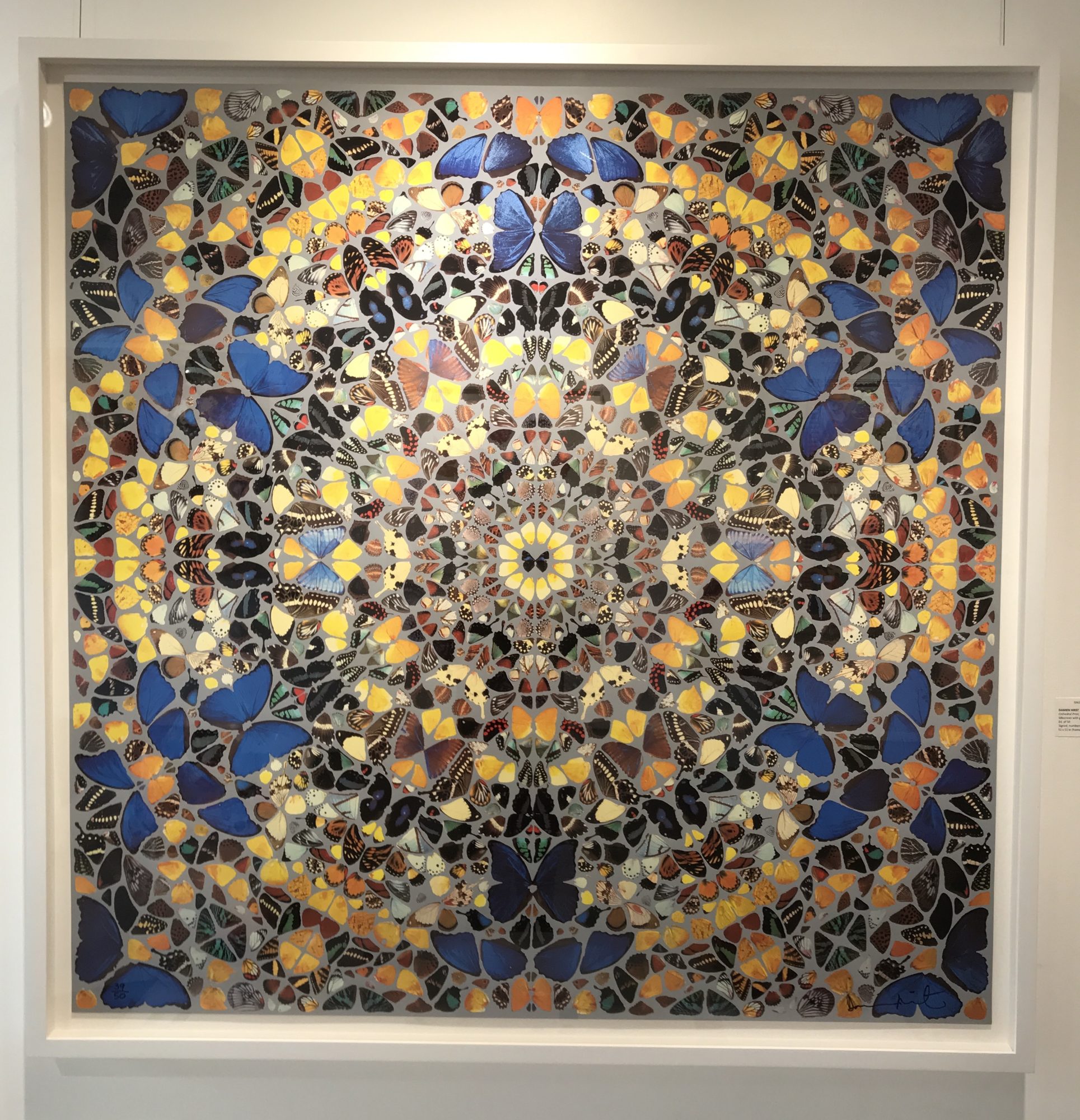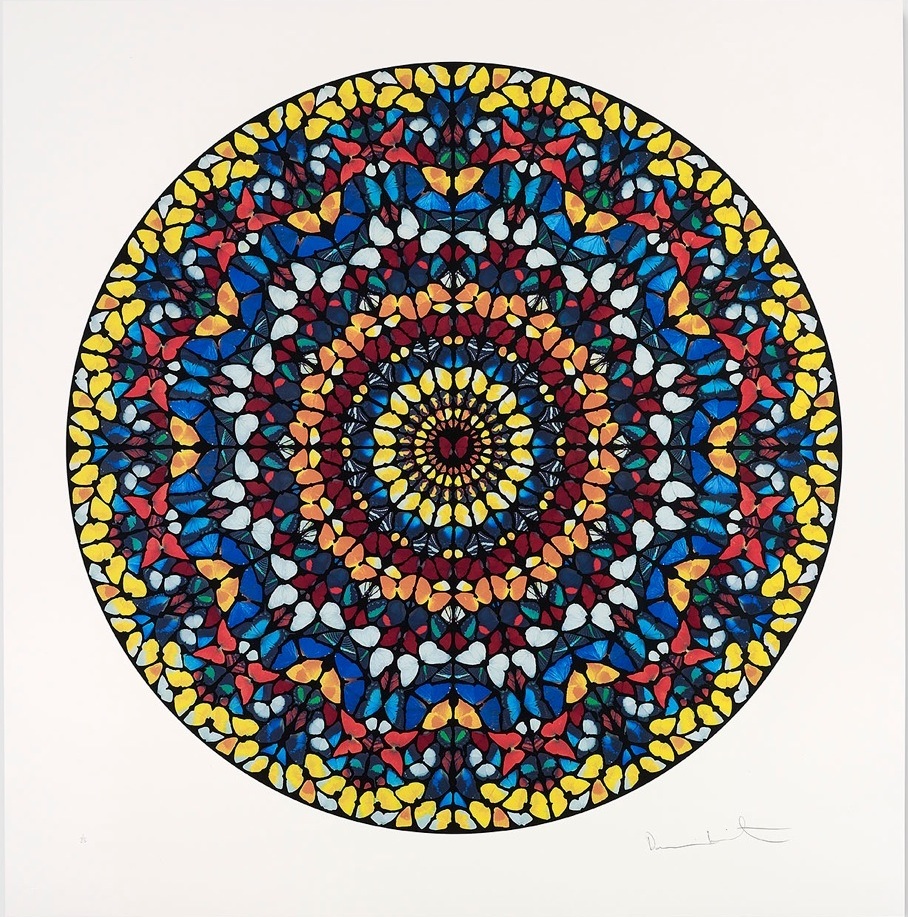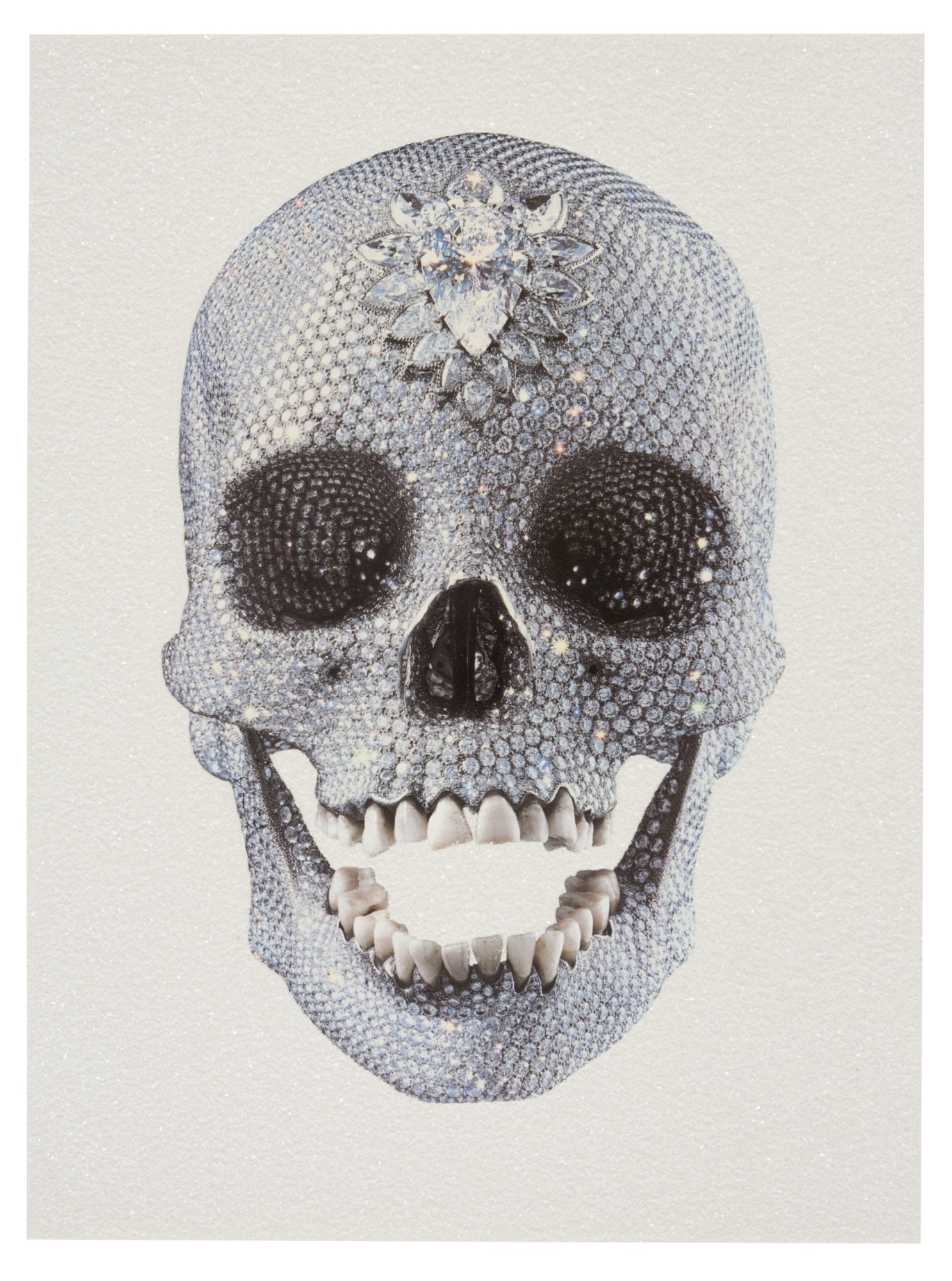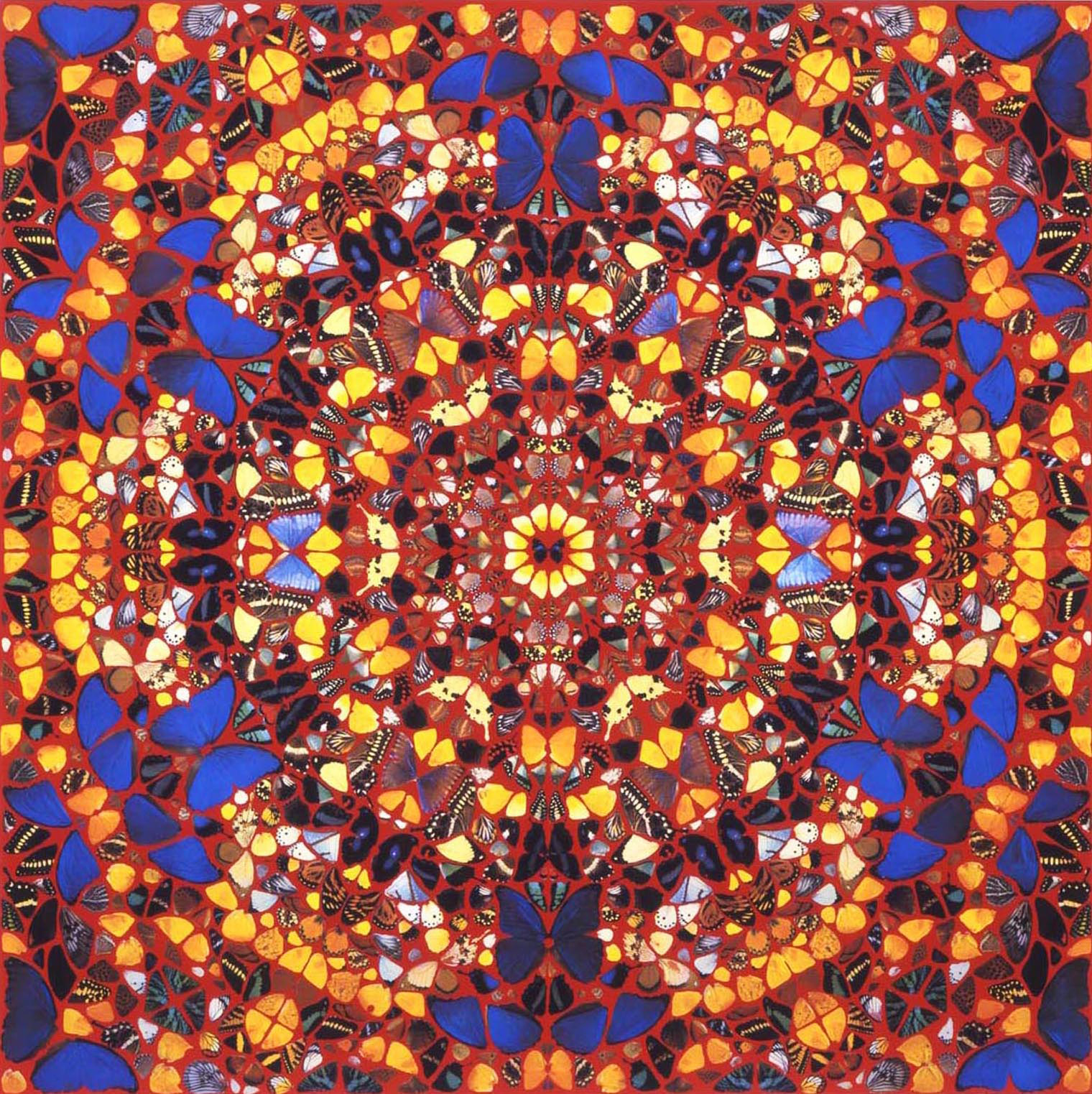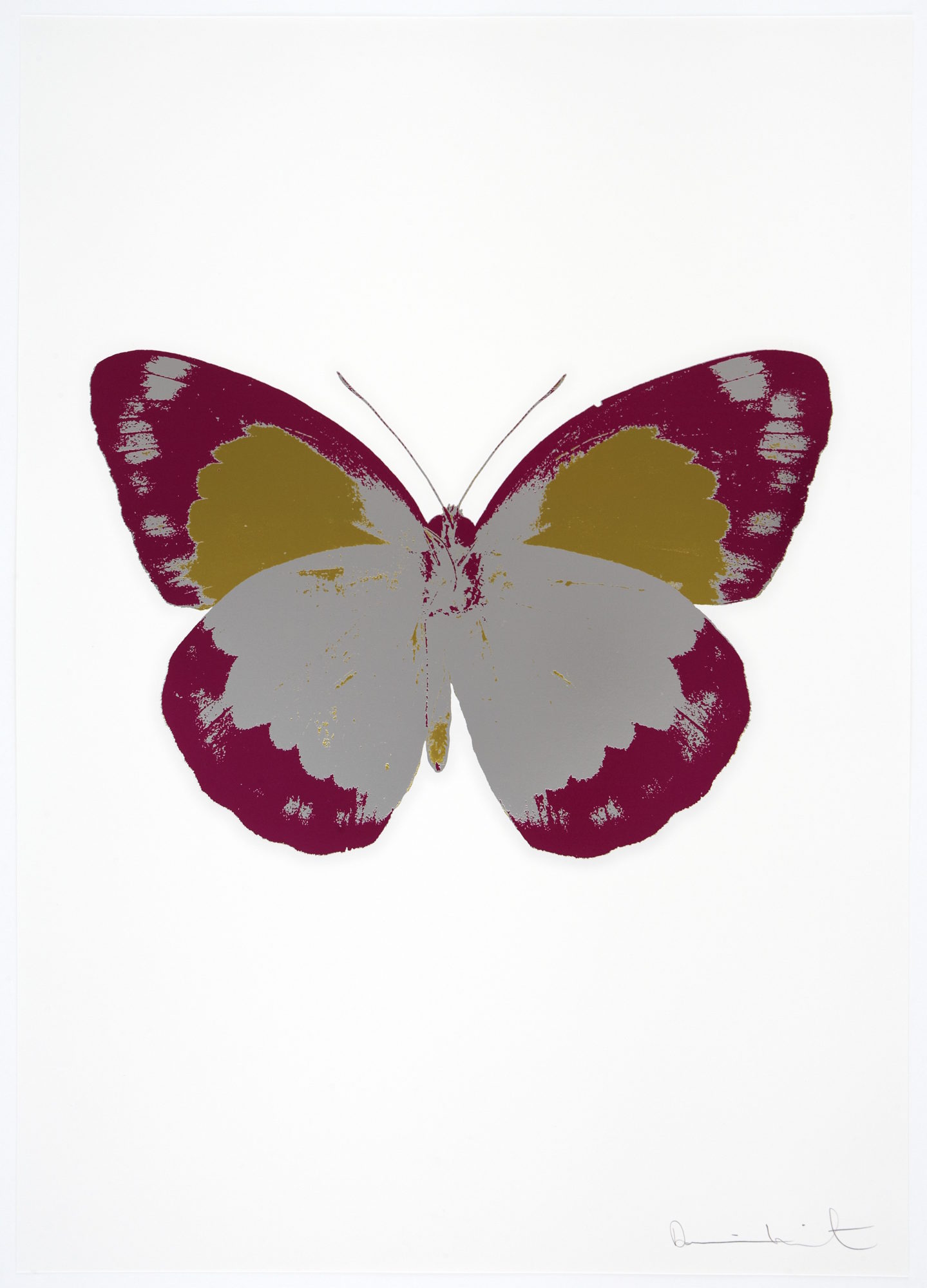Damien Hirst – Cathedral Print, St. Peters
Damien Hirst, Cathedral Print, St. Peters is a silkscreen with glaze and pearlised colours. This print is signed and numbered verso.
Modelled after the artist’s Superstition paintings of 2006, Cathedral Print, St. Peters (2007) is a radiating composition of meticulously arranged butterfly wings which create intricate patterns of dazzling shapes and colours that evoke the rose windows of Gothic cathedrals or the tesserae of Byzantine mosaics. By allying the fragility of the butterfly wings with the monumentality of religious art, these prints engage the big existential themes – nature, life, religion – that have defined Hirst’s career.
Hirst began using butterflies in his work as early as 1989. Describing the insect as a ‘universal trigger’, he has explained: “Everyone’s frightened of glass, everyone’s frightened of sharks, everyone loves butterflies.” The ‘Cathedrals’ are part of the ‘Kaleidoscope’ series, conceived by the artist in 2001 after he found a Victorian tea tray decorated with intricate patterns of butterfly wings. The works reference the spiritual symbolism of the butterfly, used by the Greeks to depict Psyche, the soul, and in Christian imagery to signify the resurrection. The perfect symmetry alludes to both the displays of light, colour and beauty as presented in Gothic stained glass windows and the circular patterns of Buddhist mandalas. The paintings, which are rendered on uniformly-sized circular, square or diamond-shaped canvases, might variously be interpreted as explorations into the nature of beauty, religion, death and the fragility of life.
| Title | Cathedral Print, St. Peters |
|---|---|
| Medium | Silkscreen with glaze and pearlised colors |
| Year | 2007 |
| Signature | Signed, numbered |
| Edition | 50 |
| Size | 47 x 47 (in) 119.5 x 119.5 (cm) |
| Price | SOLD |
Description
Damien Hirst, Cathedral Print, St. Peters is a silkscreen with glaze and pearlised colours. This print is signed and numbered verso.
Modelled after the artist’s Superstition paintings of 2006, Cathedral Print, St. Peters (2007) is a radiating composition of meticulously arranged butterfly wings which create intricate patterns of dazzling shapes and colours that evoke the rose windows of Gothic cathedrals or the tesserae of Byzantine mosaics. By allying the fragility of the butterfly wings with the monumentality of religious art, these prints engage the big existential themes – nature, life, religion – that have defined Hirst’s career.
Hirst began using butterflies in his work as early as 1989. Describing the insect as a ‘universal trigger’, he has explained: “Everyone’s frightened of glass, everyone’s frightened of sharks, everyone loves butterflies.” The ‘Cathedrals’ are part of the ‘Kaleidoscope’ series, conceived by the artist in 2001 after he found a Victorian tea tray decorated with intricate patterns of butterfly wings. The works reference the spiritual symbolism of the butterfly, used by the Greeks to depict Psyche, the soul, and in Christian imagery to signify the resurrection. The perfect symmetry alludes to both the displays of light, colour and beauty as presented in Gothic stained glass windows and the circular patterns of Buddhist mandalas. The paintings, which are rendered on uniformly-sized circular, square or diamond-shaped canvases, might variously be interpreted as explorations into the nature of beauty, religion, death and the fragility of life.
Initially refused admission, Damien Hirst took a foundation course at Leeds School of Art before applying for college. Damien Hirst was rejected by St. Martin’s, but moved to London, where Hirst worked for two years in building construction. In 1986 Damien Hirst was accepted into the BA Fine Art course at Goldsmiths University of London. While a student, Damien Hirst had a placement at a mortuary, an experience that greatly influenced Damien Hirst and Hirst’s art.
In 1988, Damien Hirst conceived, organized and promoted an independent student art exhibition entitled “Freeze.” The art exhibition was held in a Docklands warehouse, and featured several pieces by Hirst. This amazingly successful self-promoted art exhibition is widely believed to have been the starting point for Damien Hirst and the Young British Artists movement. The art exhibition was attended by art dealer Charles Saatchi, and art curators Norman Rosenthal and Sir Nicolas Serota.
In 1990 Damien Hirst along with artists Carl Freedman and Billie Sellman, curated another warehouse art show, where Hirst showed his first “Animal” installation A Thousand Years, consisting of a large glass case containing maggots and flies feeding off a rotting cow’s head. The piece was bought by Charles Saatchi, marking the beginning of Saatchi’s patronage of Damien Hirst and Hirst’s art. Saatchi’s benefaction would prove to be very important for Damien Hirst and his art career. In 1992, Saatchi commissioned of Hirst the art piece The Physical Impossibility of Death in the Mind of Someone Living, featuring a shark in formaldehyde for about $32,000. The piece would be sold in 2004 for $12 million.
Damien Hirst Cathedral Print, St. Peters
Prints by Damien Hirst
Additional information
| Title | Cathedral Print, St. Peters |
|---|---|
| Medium | Silkscreen with glaze and pearlised colors |
| Year | 2007 |
| Signature | Signed, numbered |
| Edition | 50 |
| Size | 47 x 47 (in) 119.5 x 119.5 (cm) |
| Price | SOLD |



